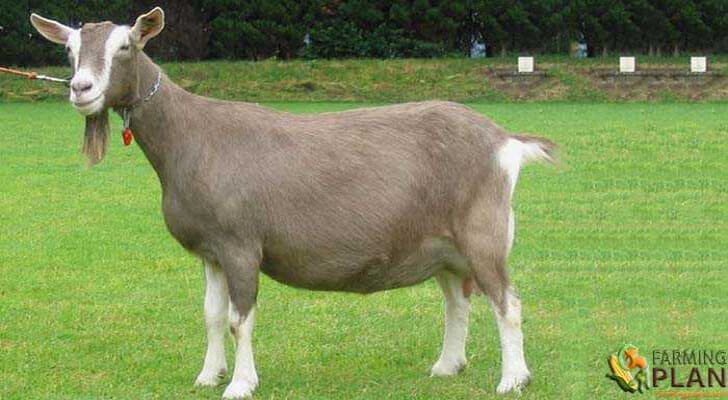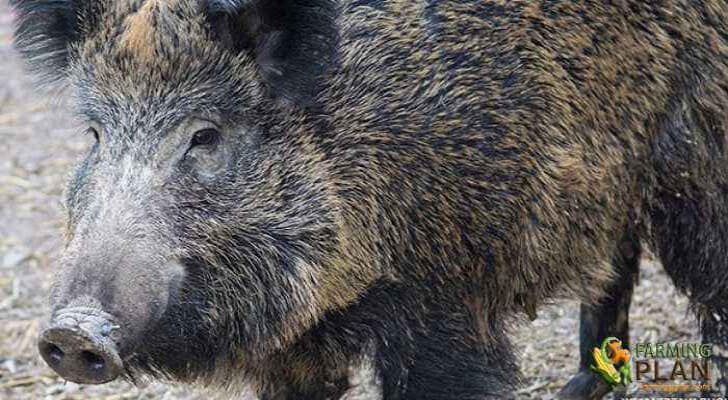Boran Cattle domesticated several countries, among them, are found, Pakistan near 4000BC, in eastern Europe 6000 BC and east of Africa south of the Sahara area of 8000 BC. The Boran developed in East Africa and the main Boran access point was the Borana Plateau in southern Ethiopia. That was a point at which all races migrated through their various destinations in Africa.
The Boran became the race to dominate East Africa and especially Kenya. It was also in Africa where improvements were made to the species. These improvements, which they achieved, were to better develop their meat production, without affecting the characteristics of the breed. Boran Cattle is considered one of the breeds with which you can combine your genes to make improvements.

In addition, it is one of the races that has not needed to make several crosses to have reached its creation. It is a totally pure race for 1300 years.
Characteristics of Boran Cattle
There are certain values that estimate the genetic makeup of the Boran cattle is different from the rest, so it is your best choice for breeding is. The composition is 24% of the European Bos Taurus, 64% BosIndicus and 12% Africa Bos Taurus. In addition, the Boran is the maternal cow of Africa, the Boran cows have very good udders with well-formed tits.
It has the quality to produce enough milk for weaned calves with a weight of more than 50% of the weight of prey at weaning. Its maternal instinct offers a good deterrent against predators. In addition to this, the Boran cattle have an excellent survival rate of the calves. Cows produce small calves at birth. However, average male calves weigh up to 28 kg. and the females weigh 25 kg. average.
In addition, the problems of childbirth problems almost do not exist. Boran cows have very good udders with well-formed tits. It is normal for a 15-year-old cow to be in good condition with a healthy and fertile mouth. You may also like to read Hereford Cattle.
It is also proof that a Boran 16-year-old bull still produces high-quality semen for artificial insemination. This breed is recognizing that the Boran’s greatest attribute is its fertility. Even in difficult cow conditions, Boran will continue to breed and rear calves and do this without punishing herself. One explanation for this is that the high fertility of the cow has a relatively low weight loss during the lactation period.
So the maintenance of a good condition, therefore able to conceive again. This breed has loose but very mobile skin with a very short coat of hair. In addition, it has a high secretion of an oily substance makes the Boran a less desirable host for ticks and flies. It has very long eyelashes and a long tail with a big well-formed tic all to protect this breed indigenismo against insects.
Boran cattle are generally recognized, calm, docile and easy to handle. This trait has developed over many generations of cattle that live close to man. You may also like to read Charolais Cattle.
Usage
One of the main reasons why this breed is sought by the breeders is because it is purebred. In addition, it has a higher hybrid value than other combined races originated from several crosses. Another reason why they breed this breed is that it stays together in a pack without much effort. They give excellent offspring and strong ones. Which adds importance to the race. You may also like to read Dexter Cattle.
Special Feature
The very strong gregarious instinct of the Boran makes it easy to handle. This makes it almost impossible to see a single animal move away from a herd. Good fiber converter in good quality meat. The unique tremendous rumen capacity of the Boran as can be seen in its exceptional depth of body allows the breed to be successfully primed from the savannah without energy supplement.
The Boran is also a good navigator and under difficult circumstances, it has the ability to stay in good condition. It adapts well to the environment and climate. It has the ability to walk well, which allows boran coverage distances to be large in search of food and water Be a good herbivore and allow the Boran browser to make use of all the vegetation at its disposal.
Their short bright summer coat and their excellent heat tolerance can be carried out by other breeds in hot and humid climates. However, it also has the unique ability to withstand extreme cold and wet conditions. During the winter it is protected by excessively thick loose skin and a cover of very dense oily hair that spills with the beginning of summer. In addition, this race matures too early Boran heifers reach puberty at an average age of 385 days.
FAQ
What is the difference between Boran and Brahman cattle?
Boran and Brahman cattle are two of the most common types of zebu cattle, which are a subspecies of Bos-indicus. They both originated in India but were developed in different parts of the country, with Boran primarily found in East Africa and Brahman popularized throughout Central America. The two breeds have some similarities as well as distinct differences that make them desirable for various agricultural tasks.
What are Boran cattle known for?
Boran cattle, also known as the African Shorthorn, are a unique breed of zebu type developed in East Africa. They are one of the oldest breeds of cattle in existence today and were first used by nomadic herders to provide dairy products and transportation means.
Where do Boran cattle come from?
Boran cattle, also known as the Africander, are an African breed of cattle that originated in the southern portion of Ethiopia and Kenya. Boran are unique among other breeds because their horns curve outward, which allows them to draw in more oxygen when running. They can reach a height of up to six feet and weigh approximately 1000 pounds when fully grown.
Conclusion
This is an introduction to the Boran Cattle breed. A popular Zebu beef in eastern Africa, this cattle type has been analyzed by Hanotte et al. through DNA sampling and it consists of 64% Bos indicus, 24% European Bos taurus and 12% African Bos taurus. We hope you found this guide helpful! Good luck with your research on Boran cattle.
As a reference: Wikipedia


